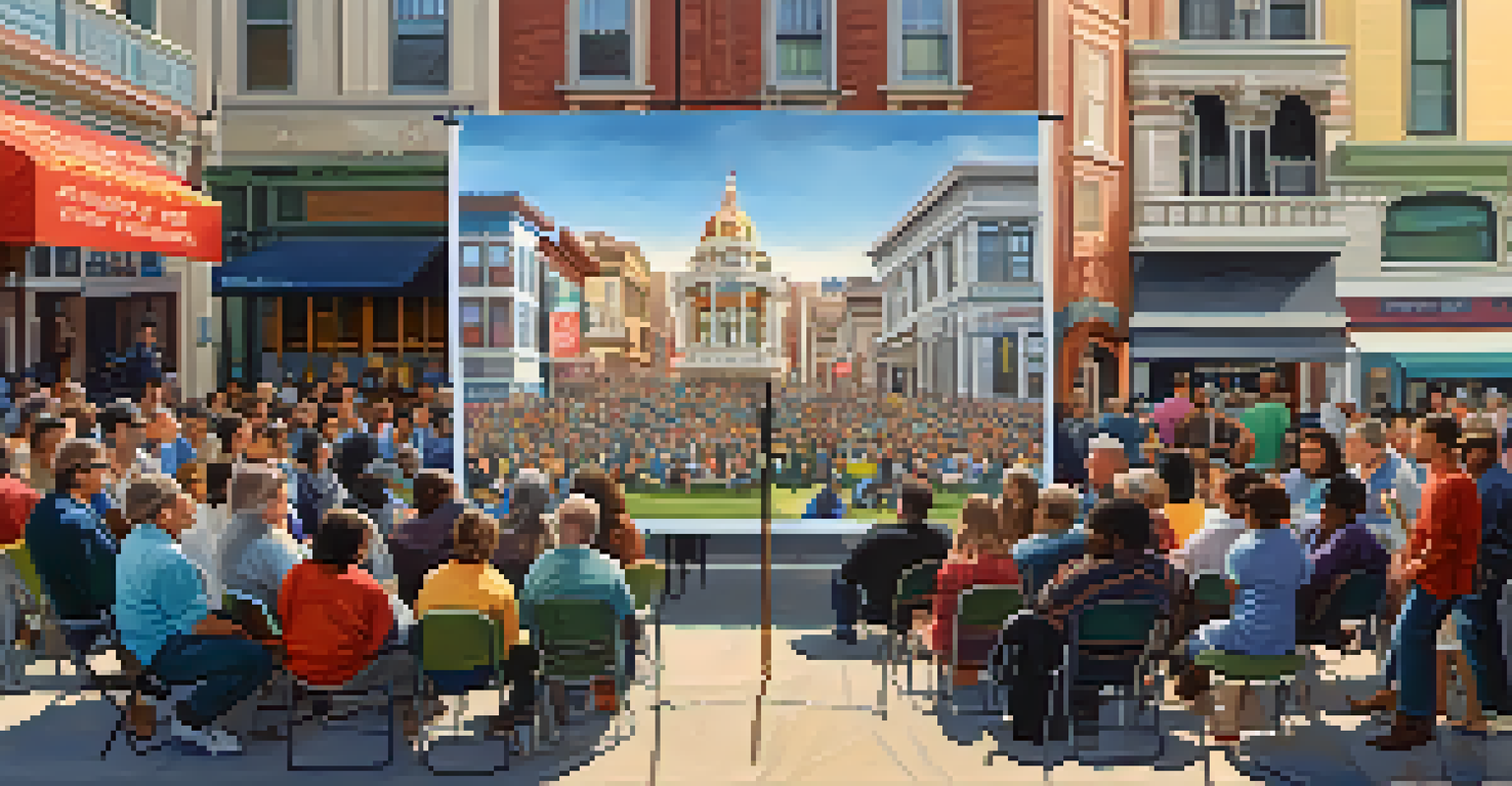Challenges Facing San Francisco in Protecting Historical Landmarks

The Importance of Historical Landmarks in San Francisco
San Francisco is adorned with a rich tapestry of historical landmarks that tell the city's story. These sites, from the iconic Golden Gate Bridge to the vintage Victorian houses, play a crucial role in defining the city’s unique character. They also attract millions of tourists each year, contributing significantly to the local economy.
Preservation is a form of activism. It is a way to keep our past alive for future generations.
However, these landmarks are more than just tourist attractions; they are symbols of the city's heritage and cultural identity. Preserving them allows future generations to connect with the past and understand the evolution of their community. Thus, the challenge of protecting these sites becomes paramount.
In a city that thrives on innovation and change, balancing modern development with historical preservation is a constant struggle. It raises the question: how do we maintain our history while embracing the future?
Urban Development Pressures on Historical Sites
As San Francisco continues to grow, the demand for new housing and commercial spaces puts immense pressure on historical landmarks. Developers often see these sites as prime real estate opportunities, which can lead to conflicts between progress and preservation. This tension is palpable in neighborhoods where old structures stand in the way of new projects.

For instance, the push for high-rise buildings has led to debates about the fate of several historical sites. While urban development aims to address housing shortages, it can inadvertently threaten the very essence of what makes San Francisco unique. It's a classic case of balancing community needs with historical respect.
Balancing Growth and Preservation
San Francisco faces challenges in balancing urban development pressures with the need to preserve its historical landmarks.
The city's zoning laws and regulations play a significant role in this equation. However, they often require careful navigation to ensure that development does not come at the expense of historical integrity.
Funding Challenges for Preservation Efforts
One of the most significant challenges facing the preservation of historical landmarks in San Francisco is funding. Maintaining and restoring these sites can be costly, and public funds are often limited. Nonprofits and community organizations frequently step in to fill the gap, but their resources can be stretched thin.
History is not a burden on the memory but an illumination of the soul.
Moreover, as the city’s budget becomes increasingly focused on urgent social issues, historical preservation can fall by the wayside. This prioritization can create a situation where landmarks are left to deteriorate, losing their charm and historical value. It's a heartbreaking reality for many advocates of preservation.
To combat this, innovative funding strategies, such as public-private partnerships, are being explored. These collaborations could provide much-needed financial support while ensuring that the voices of preservationists are heard.
Community Involvement in Landmark Protection
Community involvement plays a vital role in the protection of historical landmarks in San Francisco. Local residents often have a deep emotional connection to these sites, and their advocacy can be a powerful force for change. Grassroots movements frequently emerge, rallying support for preservation initiatives and raising awareness about the importance of these landmarks.
For example, campaigns to save specific buildings have garnered significant media attention, mobilizing citizens to voice their concerns. This kind of grassroots activism not only brings visibility to the cause but also fosters a sense of pride and ownership within the community. When residents advocate for their history, the impact can be profound.
Funding is Crucial for Preservation
Limited funding for historical landmark maintenance often forces reliance on nonprofits and community organizations.
Additionally, educational programs that highlight the significance of these sites can further engage the community. By fostering a shared appreciation for historical landmarks, San Francisco can cultivate a culture of preservation and responsibility.
Navigating Regulations and Red Tape
Navigating the intricate web of regulations surrounding historical landmark protection can be daunting. Various local, state, and federal laws govern these sites, and understanding them is crucial for preservationists. This regulatory landscape often creates hurdles when attempting to implement restoration projects or secure funding.
For instance, obtaining permits for renovations can be a lengthy and complex process. Preservationists must ensure that any proposed changes align with historical guidelines, which can sometimes feel restrictive. This red tape can result in delays and increased costs, frustrating those who are passionate about protecting these sites.
However, advocates argue that these regulations are essential for maintaining the integrity of historical landmarks. By ensuring that changes are carefully considered, the city's unique character can be preserved for generations to come.
Climate Change Impacting Historical Preservation
Climate change poses a growing threat to historical landmarks in San Francisco. Rising sea levels, increased flooding, and extreme weather events are becoming more prevalent, putting vulnerable sites at risk. This reality forces preservationists to consider not only the aesthetic and historical value of these landmarks but also their physical resilience.
For example, some coastal landmarks may require retrofitting to withstand potential flooding, which can complicate preservation efforts. Balancing the need for modern adaptations with historical authenticity presents a unique challenge. It’s a delicate dance between protecting our past and preparing for an uncertain future.
Community Advocacy Drives Change
Local residents’ involvement and grassroots movements are vital for raising awareness and advocating for the protection of historical sites.
Moreover, addressing climate-related issues often requires significant resources and planning. As the city grapples with its environmental responsibilities, historical preservation must also adapt to the realities of a changing climate.
The Future of Historical Landmarks in San Francisco
Looking ahead, the future of San Francisco's historical landmarks hinges on collaboration and innovation. As the city continues to evolve, finding ways to integrate preservation into urban planning will be essential. This means engaging stakeholders from diverse backgrounds, including developers, city officials, and community members.
Furthermore, leveraging technology can play a significant role in preservation efforts. Digital mapping, for instance, allows for better planning and understanding of historical sites, providing valuable insights into their significance. Embracing modern solutions while respecting tradition could pave the way for a more harmonious coexistence.

Ultimately, the goal is to create a sustainable future where historical landmarks are cherished and maintained. By addressing the challenges head-on and fostering a culture of preservation, San Francisco can ensure that its rich history remains a vibrant part of its identity.